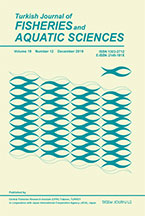Horticultural Studies (HortiS)
2019, Vol 36, Num, 1 (Pages: 73-78)
Determination of mineral content of chickpea varieties and lines grown in Turkey
Özge Doğanay ERBAŞ KÖSE 1 ,Zeki MUT 1
1 Bilecik Şeyh Edebali Üniversitesi Ziraat ve Doğa Bilimleri Fakültesi Tarla Bitkileri Bölümü, Bilecik
DOI :
10.16882/derim.2019.516765
Viewed :
3059
-
Downloaded :
1746
Chickpea is a good source of carbohydrates and proteins grown in many countries of the world. In this study, the mineral content of 25 chickpea cultivars grown under Yozgat conditions were determined. The experiment was carried out in randomized complete block design with three replications in 2011 year. As a result of analysis of variance, significant differences have been determined among the varieties in terms of all the properties examined. Potassium (K) content of the varieties varied between 7314.3-9980.1 mg kg-1, phosphorus (P) contents between 1969.9-3705.3 mg kg-1, sulfur (S) contents between 1417.2-2224.6 mg kg-1, calcium (Ca) contents between 963.1-1908.4 mg kg-1, magnesium (Mg) contents between 844.2-1267.2 mg kg-1, sodium (Na) contents between 403.2-1027.2 mg kg-1, zinc (Zn) contents between 14.2-23.8 mg kg-1, iron (Fe) contents between 37.5-79.1 mg kg-1, boron (B) contents between 7.1-12.9 mg kg-1, manganese (Mn) contents between 10.9 to 23.2 mg kg-1 and copper (Cu) contents between 5.58-8.22 mg kg-1. Gökçe and 63-C genotypes had values above average for all mineral contents examined. In addition, according to correlation analysis, a statistically significant and positive relationship was determined between all elements except potassium and sulfur.
Keywords :
Correlation; Mineral matter; Chickpea; Yozgat














